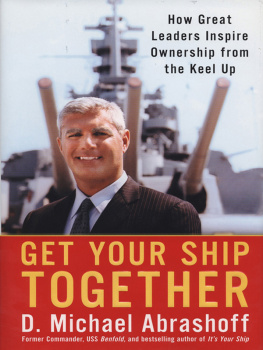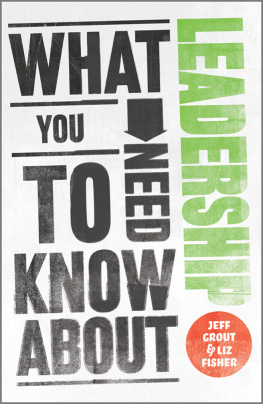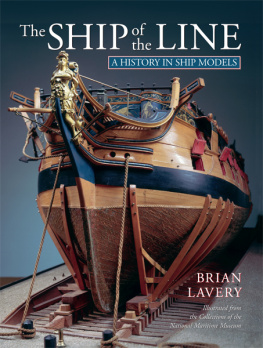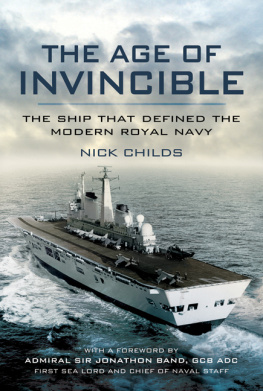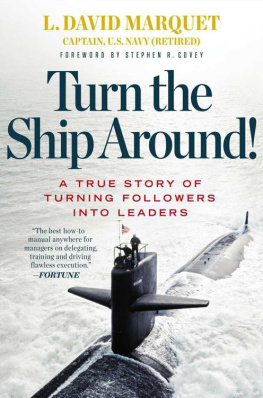GET YOUR SHIP TOGETHER
HOW GREAT LEADERS INSPIRE OWNERSHIP FROM THE KEEL UP
D. Michael Abrashoff
PORTFOLIO
PORTFOLIO
Published by the Penguin Group
Penguin Group (USA) Inc., 375 Hudson Street,
New York, New York 10014, U.S.A.
Penguin Group (Canada), 10 Alcorn Avenue,
Toronto, Ontario, Canada M4V 3B2
(a division of Pearson Penguin Canada Inc.)
Penguin Books Ltd, 80 Strand, London WC2R 0RL, England
Penguin Ireland, 25 St. Stephens Green, Dublin 2, Ireland
(a division of Penguin Books Ltd)
Penguin Books Australia Ltd, 250 Camberwell Road, Camberwell,
Victoria 3124, Australia
(a division of Pearson Australia Group Pty Ltd)
Penguin Books India Pvt Ltd, 11 Community Centre, Panchsheel Park,
New Delhi110 17, India
Penguin Group (NZ), Cnr Airborne and Rosedale Roads, Albany,
Auckland 1310, New Zealand
(a division of Pearson New Zealand Ltd)
Penguin Books (South Africa) (Pty) Ltd, 24 Sturdee Avenue,
Rosebank, Johannesburg 2196, South Africa
Penguin Books Ltd, Registered Offices:
80 Strand, London WC2R 0RL, England
First published in 2005 by Portfolio,
a member of Penguin Group (USA) Inc.
Copyright D. Michael Abrashoff, 2004
All rights reserved
Library of Congress Cataloging-in-Publication Data
Abrashoff, D. Michael.
Get your ship together! : how great leaders inspire ownership from the keel up / D. Michael Abrashoff.
p. cm.
Includes index.
ISBN: 978-1-1012-1623-1
1. LeadershipUnited States. 2. United States. NavyPersonnel management. 3. Employee motivation. 4. ManagementEmployee participation. 5. Responsibility. I. Title.
VB203.A635 2005
658.4'092dc22
2004060186
Without limiting the rights under copyright reserved above, no part of this publication may be reproduced, stored in or introduced into a retrieval system, or transmitted, in any form or by any means (electronic, mechanical, photocopying, recording or otherwise), without the prior written permission of both the copyright owner and the above publisher of this book.
The scanning, uploading, and distribution of this book via the Internet or via any other means without the permission of the publisher is illegal and punishable by law. Please purchase only authorized electronic editions and do not participate in or encourage electronic piracy of copyrightable materials. Your support of the authors rights is appreciated.
This book is dedicated to the wonderful men
and women in uniform today, both civilian
and military, who are keeping us safe.
ACKNOWLEDGMENTS
I AM ONE OF THE LUCKIEST PEOPLE ON THIS PLANET WHO HAD Mary and Don (who passed away in May 2003) Abrashoff as parents. We never had much money in our family, but I can't think of one thing we lacked growing up. I once asked Dad, What was the best investment you ever made? His answer: Making sure my seven children got educated. I have no idea what the future holds economically for this country, but if we are to maintain our competitive edge, it will begin and end with education. My mother, now eighty-two, still substitute teaches one or two days a week in the Altoona (Pennsylvania) School District and in the area vocational-technical school. She's my role model for helping to keep our great country strong.
I would like to thank the talented writers, editors, and researchers at Word-worksDonna Carpenter, Maurice Coyle, Ruth Hlavacek, Larry Martz, Barbara Nelson, Toni Porcelli, Cindy Sammons, Robert Shnayerson, Robert Stock, and Ellen Wojahn. They have made our team great. I hope to be able to continue to write books with them for many years to come. They are the best.
I also want to thank Helen Rees, my own Jerry Maguire and the best damn literary agent in the world! She has also become one of my dearest friends. I can't think of a better way to start the day than a 5:30 A.M. phone conversation with Helen, discussing world events.
Thanks also to Harry Rhodes, Tony DAmelio, and the rest of the gang at the Washington Speakers Bureau. They do a wonderful job for me and their clients. They are truly a class act. Special recognition must go to Karen McMahon and Joy Nagle, who drew the short straws and got stuck planning my travel arrangements and enduring my assorted stories about the indignities of air travel today.
And most of all, I continue to be grateful to the U.S. Navy for all the opportunities I was given, and for my wonderful crew on USS Benfold.
CONTENTS
INTRODUCTION
MY NEW LIFE AS THE CAPTAIN OF USS BENFOLD BEGAN ON A gleaming day in San Diego Bay. A high sun warmed the salt air to a perfect 73 degrees; the pale blue horizon, flecked with white sails, blended seamlessly into an indigo sea. And there I was on the bridge of a billion-dollar navy warship, a thirty-six-year-old master of the universe lounging casually in the captains chair, as I prepared to take my ship out to sea for the first time.
Benfold was a beautiful fighting machinea destroyer armed with the navys most advanced guided missiles, a radar system that could home in on a bird-sized object fifty miles away, and a presumably superb crew of 310 men and women. With four gas turbine engines at my fingertips, I could push this 8,300-ton leviathan to more than thirty knotsat least thirty-three miles an hoursending up a massive rooster tail in her wake.
My adrenaline was flowing. The moment I had been waiting for my entire career was at hand. The tugboats were alongside, standing by for the order to guide us away from the pier.
Despite all that power and sophisticated machinery, and no matter how good a ship handler the captain may be, we still need tugboats to help steer us into and out of our berth. Mooring to and getting under way from the pier are two of our most difficult maneuvers. Lots of things can go wrongyou can smash into the wharf or into ships behind you, or run the ship aground. If any of those things were to happen, I could get fired almost on the spot; my head would roll even before the investigation started.
Also, right underneath the bow of the ship is a huge, bulbous sonar dome covered by a black rubber protective device. Think of it as a five-million-dollar steel-belted radial tire. If it scrapes the curb (read pier ), you can decrease the sonars ability to detect submarines. Or, worst case, you can puncture the protective shield and deflate it completely. So prudence dictates that we use tugs to move us away from the pier.
Now, with the engines just whispering at idle speed, their vast stores of power bridled, we prepared to shove off. What a kick. I was bursting with pride. I couldnt wait to hit the open sea and order all engines ahead, flank speed.
I gave the order to take in all lines, directed the tugs to start backing us slowly from the pier, and then, like air whooshing out of a balloon, my ego cruise ended before it ever got under way. Benfold suddenly lost power. Her engines quit turning. In an instant, she became nothing but 8,300 tons of steel likely to run aground or crash into another ship. In the eerie silence, red warning lights blinked everywhere. I dashed into the pilothouse, fumbling for emergency phones, demanding information. At that moment, I was enormously relieved and grateful to have the tugboats hovering nearby like watchful parents running alongside a kid on a new bike. I ordered the tugs to push us back to the pier while we investigated the power failure.
When a ship loses power abruptly, you have four chances to avoid disaster. You can kick-start the engines by shooting a jet of high-pressure air into the turbines. Like an old-fashioned hand crank, the air jolt gets everything spinning and firing up again. If the first attempt fails, you have three flasks of emergency air for three more tries. But if those dont work, thats ityour ship is dead in the water, a useless and dangerous hulk that has to be towed back to port. That is the ultimate disgrace, rare but not unheard of.

